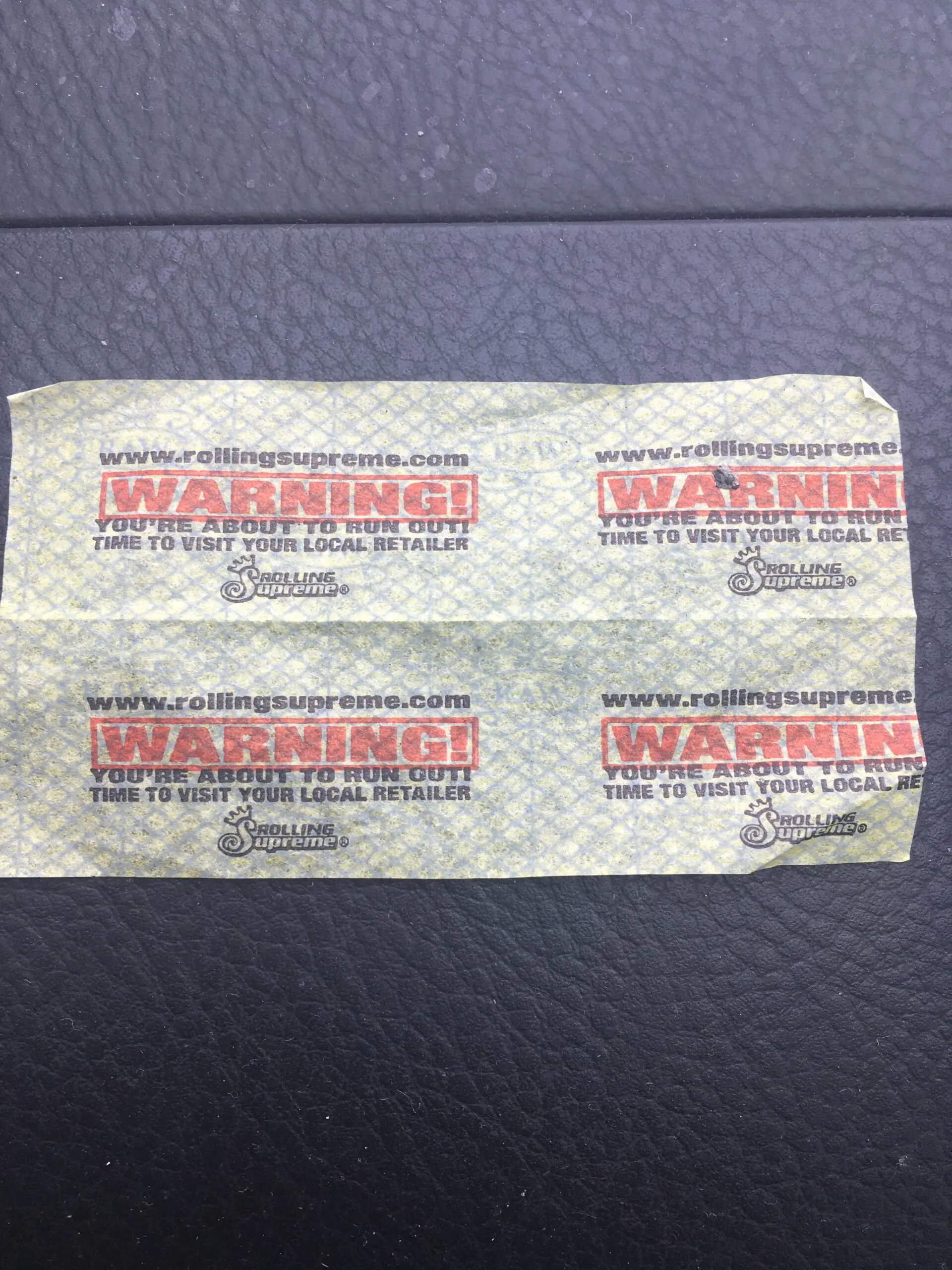Smoking ink can potentially result in respiratory problems and other health hazards. When you smoke ink, you are inhaling a toxic mixture of burning pigment, resins, and dryers, which can be harmful to your lungs and overall health.
It is important to avoid smoking ink or exposing yourself to its fumes to protect your respiratory system and well-being. Quitting smoking altogether is the best way to reduce the risk of harm to your health.

Credit: bishoptattoosupply.com
1. Understanding The Risks Of Smoking Ink
Smoking ink can have serious health risks, including respiratory problems and potential carcinogenic effects. Inhaling the toxic cocktail of burning ink, such as pigments, resins, and dryers, can be harmful to your lungs and overall well-being. It is important to understand the dangers associated with smoking ink and consider alternative options.
Ink Poisoning Concerns:
- Ink poisoning can occur if ink enters the bloodstream through smoking.
- Ingesting ink can lead to symptoms such as nausea, vomiting, and abdominal pain.
- The chemicals present in ink can have adverse effects on the body, especially if smoked in large quantities.
Health Hazards Associated With Inhaling Ink Fumes:
- Inhaling ink fumes can lead to respiratory problems such as asthma or irritation in the lungs.
- Some individuals may experience symptoms like coughing, wheezing, and shortness of breath.
- Prolonged exposure to ink fumes may increase the risk of developing serious respiratory issues.
Potential Respiratory Problems And Carcinogenic Risks:
- Smoking ink can expose the lungs to harmful chemicals, potentially leading to respiratory problems.
- Ink contains various substances, including pigments, resins, and dryers, which can be toxic when burned and inhaled.
- Some studies suggest that certain ink pigments may be carcinogenic, posing a long-term risk to smokers.
Remember, smoking ink is dangerous and can have serious health repercussions. It is always best to avoid smoking or inhaling any substances that are not intended for consumption. Quitting smoking altogether is the only way to protect your health and reduce the risk of developing associated respiratory problems or diseases.
Stay safe and prioritize your well-being.
2. Effects Of Smoking Paper With Ink
Smoking paper with ink can have harmful effects on your health. Inhaling the burning pigment, resins, and dryers in the ink can lead to respiratory problems, nausea, and potentially even carcinogenic effects. It is important to avoid smoking ink and opt for safer alternatives.
Effects Of Smoking Paper With Ink
In this section, we will explore the effects of smoking paper with ink. Smoking ink can release toxic substances and potentially harm your health. The composition of ink and its potential harm when inhaled are important factors to consider. Additionally, forensic pathologists have an interest in understanding the effects of smoking ink.
Toxic Substances Released From Burning Ink:
- Carbon pigments: When ink is burned, carbon pigments are released. These pigments, especially if the ink is black, can be toxic when inhaled.
- Resins: Ink often contains resins, which can produce harmful fumes when burned. Inhaling these fumes may lead to respiratory problems and lung irritation.
- Dryers: Ink may also contain drying agents that are released when burned. These dryers can be carcinogenic and pose long-term health risks.
Composition Of Ink And Its Potential Harm When Inhaled:
- Pigments: Inks contain various pigments to create different colors. Some of these pigments, such as carbon black, can be harmful when inhaled. They can cause lung irritation, coughing, and respiratory distress.
- Solvents: Ink solvents help the ink flow smoothly. However, these solvents can also be harmful when inhaled, especially in high concentrations. They can irritate the respiratory system and may even lead to chemical pneumonitis.
- Binders: Ink binders help the ink adhere to the paper. When burned, these binders can release harmful fumes and particulate matter into the air. Inhaling these fumes can contribute to respiratory problems.
Interest To Forensic Pathologists:
- Curiosity factor: The act of smoking ink is seen as an unusual behavior, which piques the interest of forensic pathologists. They may study the effects of ink inhalation to better understand its potential health risks and contribute to the field of forensic science.
- Occupational exposure: Forensic pathologists often encounter cases where individuals have been exposed to ink fumes as part of their occupation. By understanding the effects of smoking ink, forensic pathologists can better assess the potential health risks associated with this exposure and provide appropriate treatment or recommendations.
It is essential to note that smoking ink is not a safe practice and can have detrimental effects on your health. The toxic substances released from burning ink, along with the composition of ink and its potential harm when inhaled, highlight the importance of avoiding such behaviors.
3. Exploring Safe Smoking Options
Exploring safe smoking options is important, especially when it comes to the potential hazards of smoking ink. Inhaling ink can lead to respiratory problems and nausea, and it may even be carcinogenic. It’s crucial to understand the risks involved and consider safer alternatives.
:
While smoking ink may not be a safe option due to potential health hazards, it’s important to explore alternative methods to reduce harm. Here are some options to consider:
- Lack of safe smoking options: Unfortunately, there is no safe smoking option when it comes to tobacco. Even light, low-tar, and filtered cigarettes are not safer as people tend to smoke them more deeply or consume more of them.
- Quitting smoking as the only way to reduce harm: The only way to truly reduce the harm caused by smoking is to quit altogether. Quitting smoking can significantly improve the health of your lungs and decrease the risk of various smoking-related illnesses.
- Reduced risk of certain cancers by quitting smoking: By quitting smoking, you can significantly reduce your risk of developing certain types of cancers, including lung, throat, mouth, and esophageal cancers. It’s never too late to quit and start prioritizing your health.
Remember, it’s essential to consult with a healthcare professional or smoking cessation expert for personalized guidance and support on quitting smoking. While exploring safe smoking options is crucial, the ultimate goal should always be to quit smoking to improve your overall health and well-being.
Frequently Asked Questions For What Happens If You Smoke Ink
Is Pen Ink Toxic To Inhale?
Pen ink is generally considered nonpoisonous, but inhaling it may irritate the respiratory system.
What Does Inhaling Ink Do?
Inhaling ink may cause respiratory problems and nausea, and some fear it may be carcinogenic.
What Happens If I Smoke Paper With Ink On It?
Smoking paper with ink on it can be harmful as it may release toxic chemicals when burned, which can be harmful to the lungs.
What Is Safe To Smoke?
There is no safe smoking option. All smoking, including ink, is harmful and can cause respiratory problems and potentially be carcinogenic. Quitting smoking is the only way to reduce harm.
Is It Safe To Inhale Pen Ink?
Inhaling pen ink is generally considered nonpoisonous and poses no immediate danger to your health.
Conclusion
Inhaling ink, whether from smoking paper with ink on it or directly smoking ink itself, can have serious health consequences. While pen ink is generally considered nonpoisonous, inhaling the fumes can lead to respiratory problems, including asthma, and nausea. The burning pigments, resins, and dryers found in ink can create a toxic cocktail that can be harmful to your lungs and overall health.
Additionally, some people fear that ink inhalation may be carcinogenic. It is important to note that there is no safe smoking option, and quitting smoking remains the best way to reduce harm and improve your lung health. Smoking ink is not only risky but also unnecessary.
Protect your lungs and reduce your risk of certain cancers by avoiding any form of ink inhalation.

